A half-Letterman pop-culture list? That’s a very difficult assignment for me. Today I don’t have much time to absorb any mass-media entertainment streams. Though I did consider subscribing to HBO just to be able to watch the documentary “Superheroes.” (I ultimately decided against it.)
When I was a kid, I couldn’t wait for Saturday morning so I could watch the Super-Friends in action. Today, I am much more interested in real-life social justice, than I am in the Justice League.
Today, through my aging eyes, super heroes just seem like fascist bullies (who must have never watched The People’s Court).
The best arguments by Karl Marx aside– I really don’t want a bunch of violent vigilantes to be the role models for my children. Worse, still– the genre typically depicts women in a sexist manner, all scantily clad and inhumanly proportioned.
So are there any supers left in the world that I can still respect and admire?
Maybe about a Rob Fleming list full:
5.) The Original Superman, Kal-L
The hospitality that Mary and Pa Kent (later rewritten as Martha and Jonathan Kent) showed to this undocumented immigrant is worthy of admiration alone. In Action Comics #1, Lois Lane also sets a good example for challenging the status quo and Superman tackles corrupt politicians. With SupermanÔøΩs second appearance in Action Comics #2, the hero confronts a munitions manufacturer hoping to profit on the war in Europe. In the next issue, he corrects a heartless mine owner who won’t give a crippled miner a pension after he was caught in a cave-in.
In a 1975 press release, Superman creator Jerry Siegel wrote, “What led me into creating Superman in the early thirties? Listening to President Roosevelt’s fireside chats, being unemployed and worried during the depression, knowing homelessness and fear, hearing and reading of the oppression and slaughter of helpless oppressed Jews in Nazi Germany, and seeing movies depicting the horrors of privation suffered, I had the great urge to help the downtrodden masses, somehow. How could I help them when I could barely help myself? Superman was the answer.”
The only thing keeping the 1930s Superman from a higher spot in the countdown would be the fact that his treatment of the baddies could sometimes make water-boarding look a little tame by comparison. Of course, this was all changed by the comics code of the 1950s– but by that point, Superman was already shying away from changing the system, taking down the KKK, demolishing slums, correcting exploitative business leaders, etc…. and was already evolving into the more jingoistic big blue boyscout that he would remain thereafter.
I briefly entertained the idea of putting Batman on the list after reading this, though, unfortunately, he was just flat wrong when he said that Batman doesn’t kill:
4.) Coming in at number four in the countdown: A tie…
Had any of these comics seen a larger mainstream run, they would be at the very top of the list. Because most of these titles are no longer in print, the number four spot is a 3-way tie between:
4.c.) Cyberella, Sunny Winston and ‘Lil Ella
Unfortunately this series lasted only 12 issues. So few graphic novels deal with systemic classism, but this was one that empowered us with the message that even in a society where those who have the gold make the rules, the human soul cannot be bought.
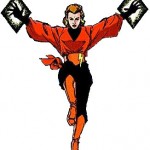 Pin It4.b.) Grace
Pin It4.b.) Grace
Created by Barbara Kesel, Amazing Grace first appeared in Comics’ Greatest World: Golden City in 1993. Grace was a smart, powerful character who used her super powers to better the world in practical ways. She ran Golden City and defended it from many threats; the main one came from the United States.
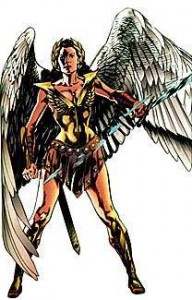 Pin It4.a.) Winged Victory, Kristin (last name unknown)
Pin It4.a.) Winged Victory, Kristin (last name unknown)
Winged Victory is an independent heroine and champion of women’s rights. The hero established and maintained a number of women’s centers (originally shelters) and clinics, and is a vocal and passionate spokeswoman for the political, legal, and social emancipation of women. (Kurt Busiek’s Astro City is actually still being published, but Winged Victory is so rarely seen that the highest that she can go on our list is fourth place.)
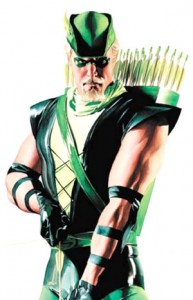 Pin It3.) The Green Arrow, Ollie Queen
Pin It3.) The Green Arrow, Ollie Queen
In 1969 Denny OÔøΩNeil miraculously transformed the Green Arrow from a cheap Batman/Robin Hood hybrid knock-off into an outspoken advocate of the underprivileged and oppressed. In the early 1970’s Oliver Queen became a heroic voice against racism and corruption. Writer O’Neil and illustrator Neal Adams paired Green Lantern and Green Arrow and sent them on an “easy rider” tour of the nation. The brief series dealt with pollution, overpopulation, drug addictions, and more. While Green Lantern was the straight-laced law-and-order type, Green Arrow was the indignant advocate of true social change. Unfortunately, though, a comic book character is only as good as the author and artist du-jour: While everything with this character before 1969 is really bad, everything about Green Arrow between 1987 and 2001 is even worse– the hero was rewritten as merely a cold-blooded, violent vigilante during the entire 1990s.
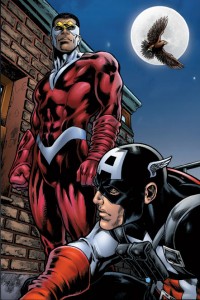 Pin It2.) The Falcon, Sam Wilson
Pin It2.) The Falcon, Sam Wilson
The first African American to appear in comic books actually had his own title, but because the western cowboy named Lobo only appeared in two issues from Dell Comics in 1965 (and because Lobo was a cowboy, not a superhero) the number two spot in the countdown must go to Sam Wilson. Sam’s character was not even the first black superhero, but he was mainstream comics’ first African-American superhero. (Marvel Comics had previously introduced Black Panther, but he was African.) The Falcon debuted two years before an African American donned the mantle of Green Lantern, nearly three years before Luke Cage (Marvel’s first African-American series star), and almost six years before the African character Storm (the first black female superhero). The Falcon is also the first superhero of African descent not to have the word “black” as part of his superhero name. Being a groundbreaking “first” is not enough to make a spot in a top 5 (or else, we’d need to make room for Doctor Mid-Nite, Northstar, and others).
The Falcon confronted former Nazis who had enslaved island villagers in his very first appearance. (He was able to empower and inspire the villagers to overcome their oppressors.) The character would also go on to share title billing with Captain America from 1971 to 1978, and give the good Captain (and all the young readers) much to think about in the realm of racism with his insights and unabashed championing of equity.
The character’s original fictional back-story was also an incredibly noble one for the time– he was first depicted by Stan Lee and artist Gene Colan as a former social worker motivated by a desire to better the lives of inner-city youth. However, in June of 1975 Steve Englehart stripped the character of his noble beginnings and rewrote the Falcon as a former mob-connected thug and pimp.
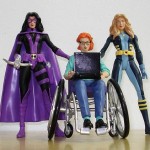 Pin It1.) Birds of Prey: Barbara Gordon (Oracle), Dinah Lance (Black Canary), and Helena Rosa Bertinelli (Huntress)
Pin It1.) Birds of Prey: Barbara Gordon (Oracle), Dinah Lance (Black Canary), and Helena Rosa Bertinelli (Huntress)
When you talk about superheroes worth admiring, there might not be very much there– until you compare the best in the genre with everything in the medium that is not worth admiring. For an eye-opening, but harrowing, list of some of the worst misogyny you will ever see in print, just visit the Women in Refrigerators site.
When Barbara Gordon was first shot through the spine in a Batman comic book (ending her career as Batgirl), it was just one more example of the disturbing tendency for comic book writers (almost exclusively male) to have female characters de-powered, crippled, raped, or killed. However, Barbara Gordon (as Oracle) has become very popular and remains one of very few paralyzed characters portrayed in superhero comics.
The best era for this team was the early years. In the early days of Birds of Prey, the team thwarted an industrial billionaire who was contracting with third world governments to build dangerous power plants. The team also overthrew the leader of a small island nation who was providing slaves, both as laborers and sexual prey, to American corporations that based their offshore operations in his country. The original Birds of Prey also uncovered a textile sweatshop operating in the heart of Metropolis.
When the team first formed, we not only got to see in Barbara Gordon a rare example of a superhero who triumphs almost solely by the use of her intellect– but the world also gained a Black Canary who had traded in her original costume (fishnets, bodice, and high heels) for a full body suit and boots that were much more practical. Unfortunately, Black Canary’s fishnets made a return. That was almost enough to bump the Birds from the top spot alone– but the Birds of Prey are getting a new reboot soon, so they are still in the list (in the hope that the future can be brighter than the past).
——————————————
That officially concludes the top five superheroes in comic books that might have some admirable traits. Still, all of these titles are extremely violent, and not worthy of unconditional admiration.
Are there any nonviolent superheroes outside of mainstream comic books that are worthy of acclaim and true admiration?
YES! Far more than you’ll find on the shelves of comic book stores these days. But you’ll have to read my next blog post on Friday to see that list!









Leave a Reply